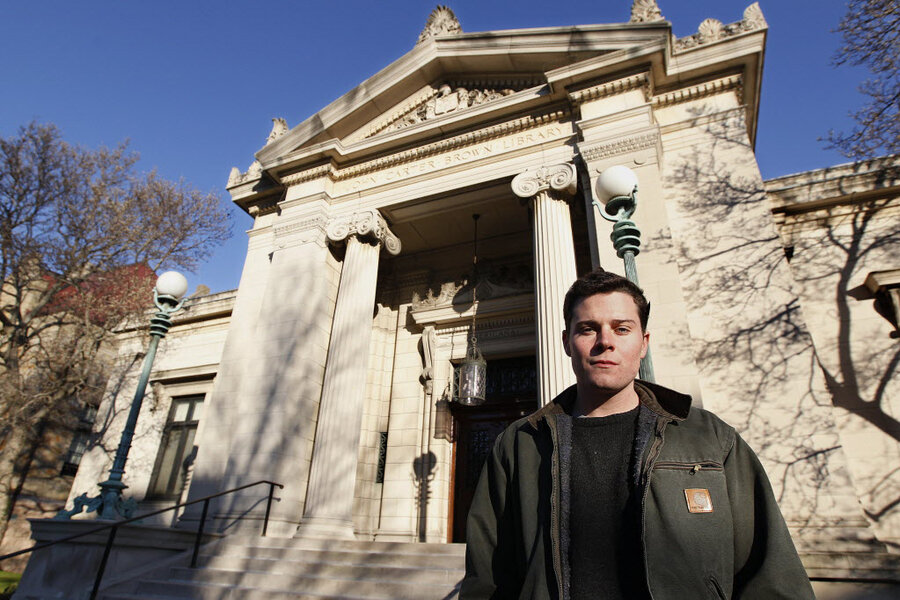Brown University students crack centuries-old code used by Roger Williams
Loading...
| Providence, Rhode Island
The obscure book's margins are virtually filled with clusters of curious foreign characters — a mysterious shorthand used by 17th century religious dissident Roger Williams.
For centuries the scribbles went undeciphered. But a team of Brown University students has finally cracked the code.
Historians call the now-readable writings the most significant addition to Williams scholarship in a generation or more. Williams is Rhode Island's founder and best known as the first figure to argue for the principle of the separation of church and state that would later be enshrined in the Bill of Rights.
His coded writings are in the form of notes in the margins of a book at the university's John Carter Brown Library. The nearly 250-page volume, "An Essay Towards the Reconciling of Differences Among Christians," was donated in the 1800s and included a handwritten note identifying Williams as the notes' author — though even that was uncertain at first.
A group including former library director Edward Widmer, Williams scholar and Rhode Island College history professor emeritus J. Stanley Lemons and others at Brown started trying to unravel the so-called "Mystery Book" a few years ago. But the most intense work began this year after the university opened up the challenge to undergraduates, several of whom launched an independent project.
"No one had ever looked at it systematically like this in generations," Widmer said. "I think people probably looked at it and shrugged."
Senior math major Lucas Mason-Brown, who has done the majority of the decoding, said his first instinct was to develop a statistical tool. The 21-year-old from Belmont, Mass., used frequency analysis, which looks at the frequency of letters or groups of letters in a text, but initially didn't get far.
He picked up critical clues after learning Williams had been trained in shorthand as a court stenographer in London, and built his own proprietary shorthand off an existing system. Mason-Brown refined his analysis and came up with a rough key.
Williams' system consisted of 28 symbols that stand for a combination of English letters or sounds. How they're arranged is key to their meaning; arrange them one way and you get one word, arrange them another, you get something different. One major complication, according to Mason-Brown: Williams often improvised.
From there, Mason-Brown was able to translate scattered fragments, and the students determined there were three separate sections of notes. Two are Williams' writings on other books, a 17th century historical geography and a medical text. The third — and most intriguing — is 20 pages of Williams' original thoughts on one of the major theological issues of the day: infant baptism.
Williams also weighed in on the conversion of Native Americans, implying it was being achieved through treachery and coercion, said Linford Fisher, a history professor at Brown who has been working with Mason-Brown.
Fisher said the new material is important in part because it's among Williams' last work, believed to have been written after 1679 in the last four years of his life.
The new discovery is remarkable on several levels, Widmer said.
"Part of it was the excitement of a mystery being cracked, and part of it was Roger Williams is very famous in Rhode Island — no other state has a founder as tied up with the state's identity as Rhode Island," he said. "To have a major new source, a major new document, from Roger Williams is a big deal."







